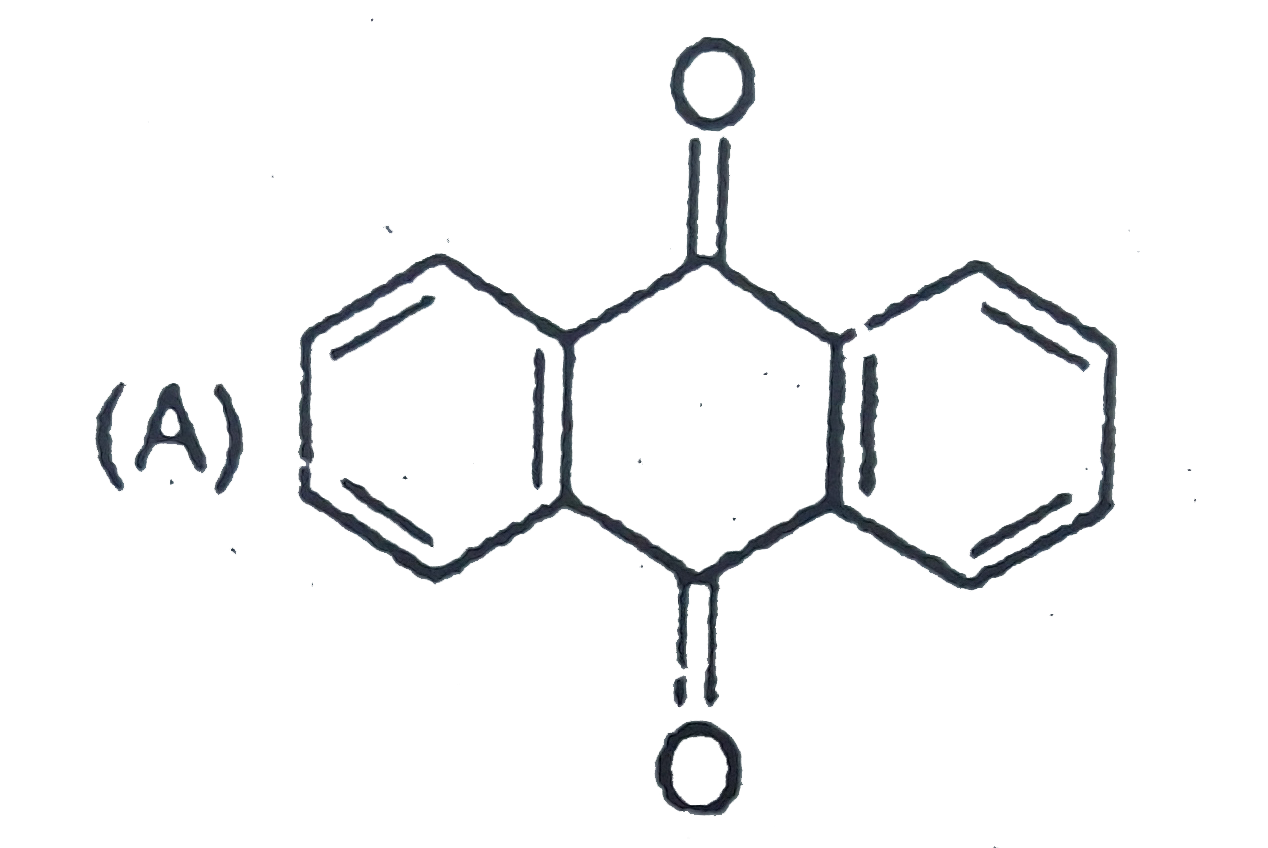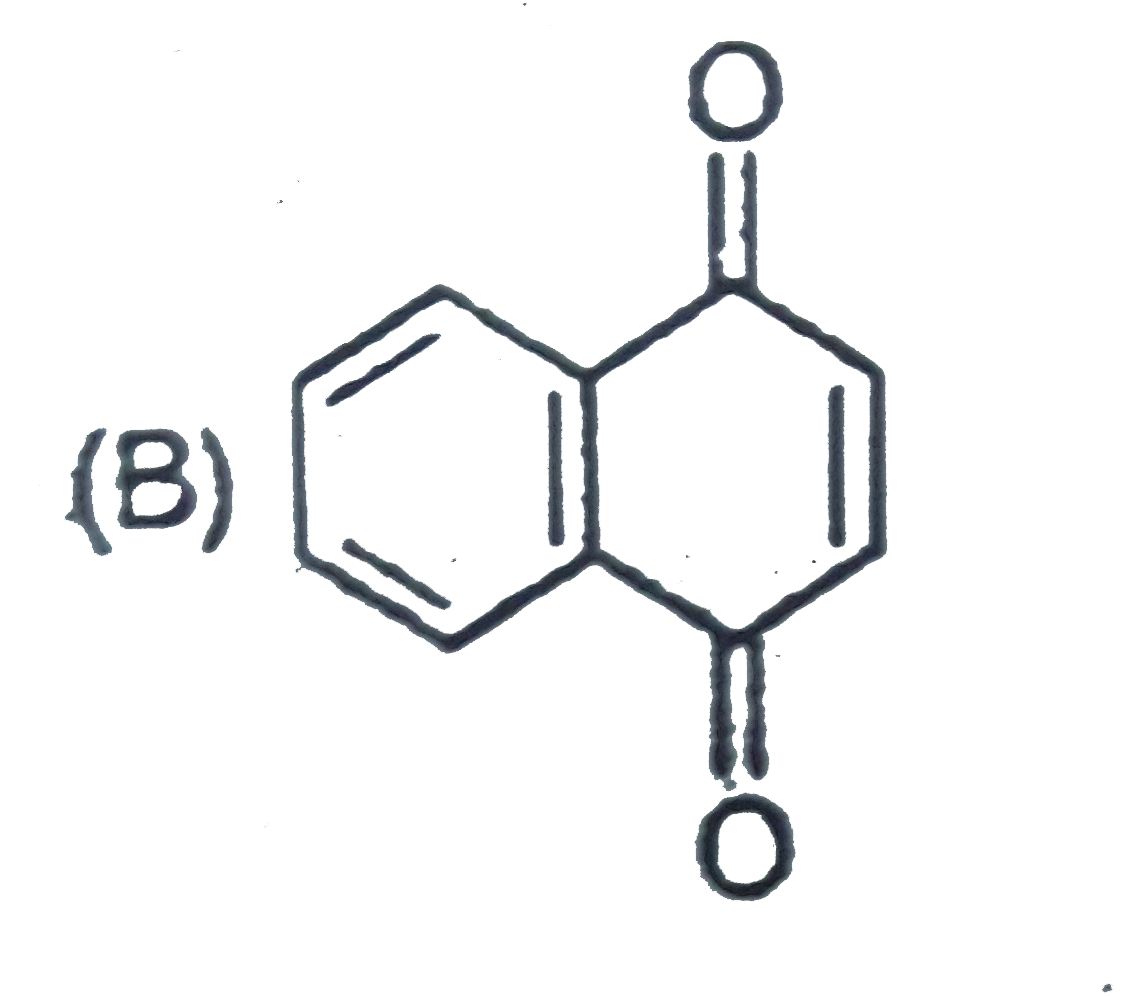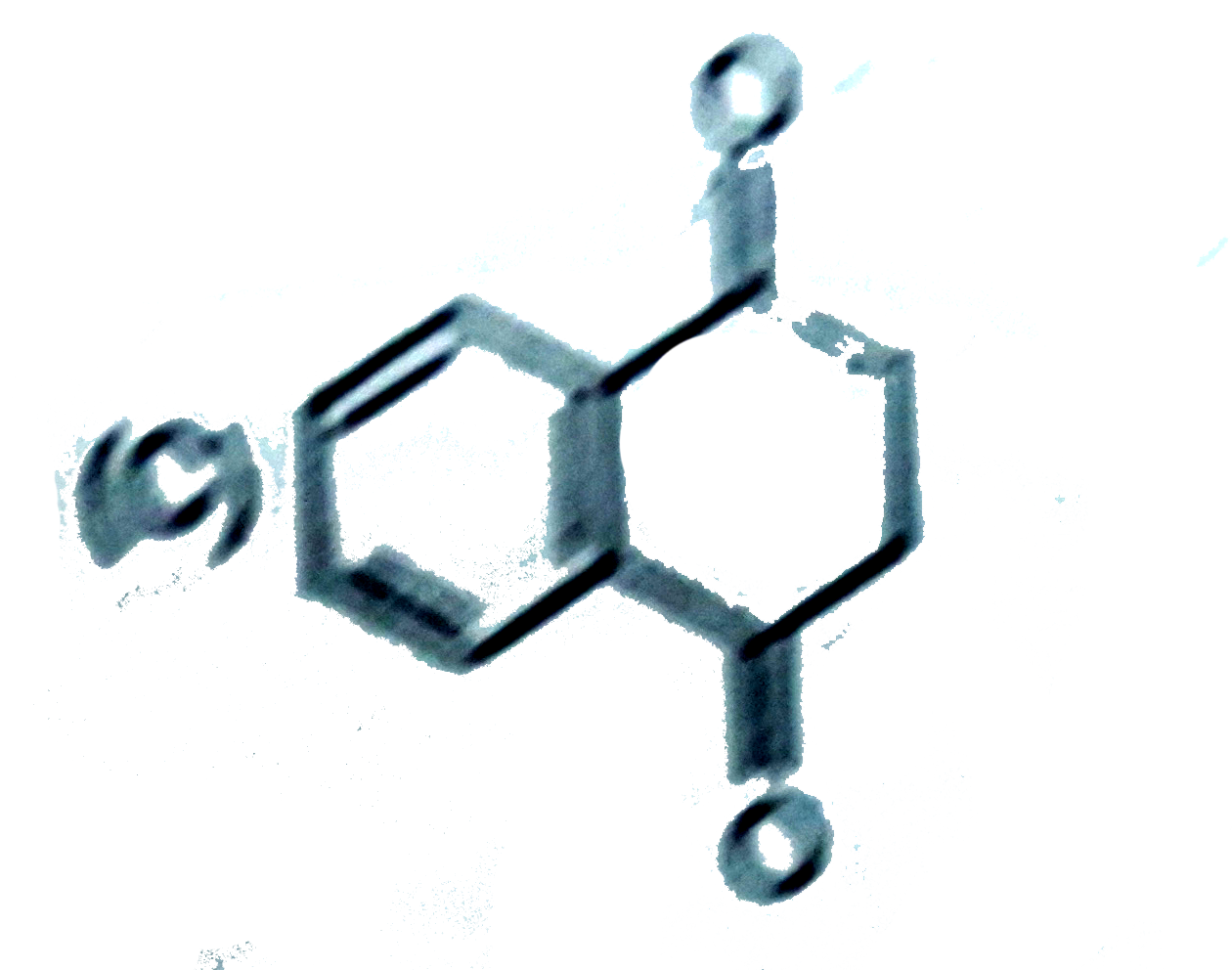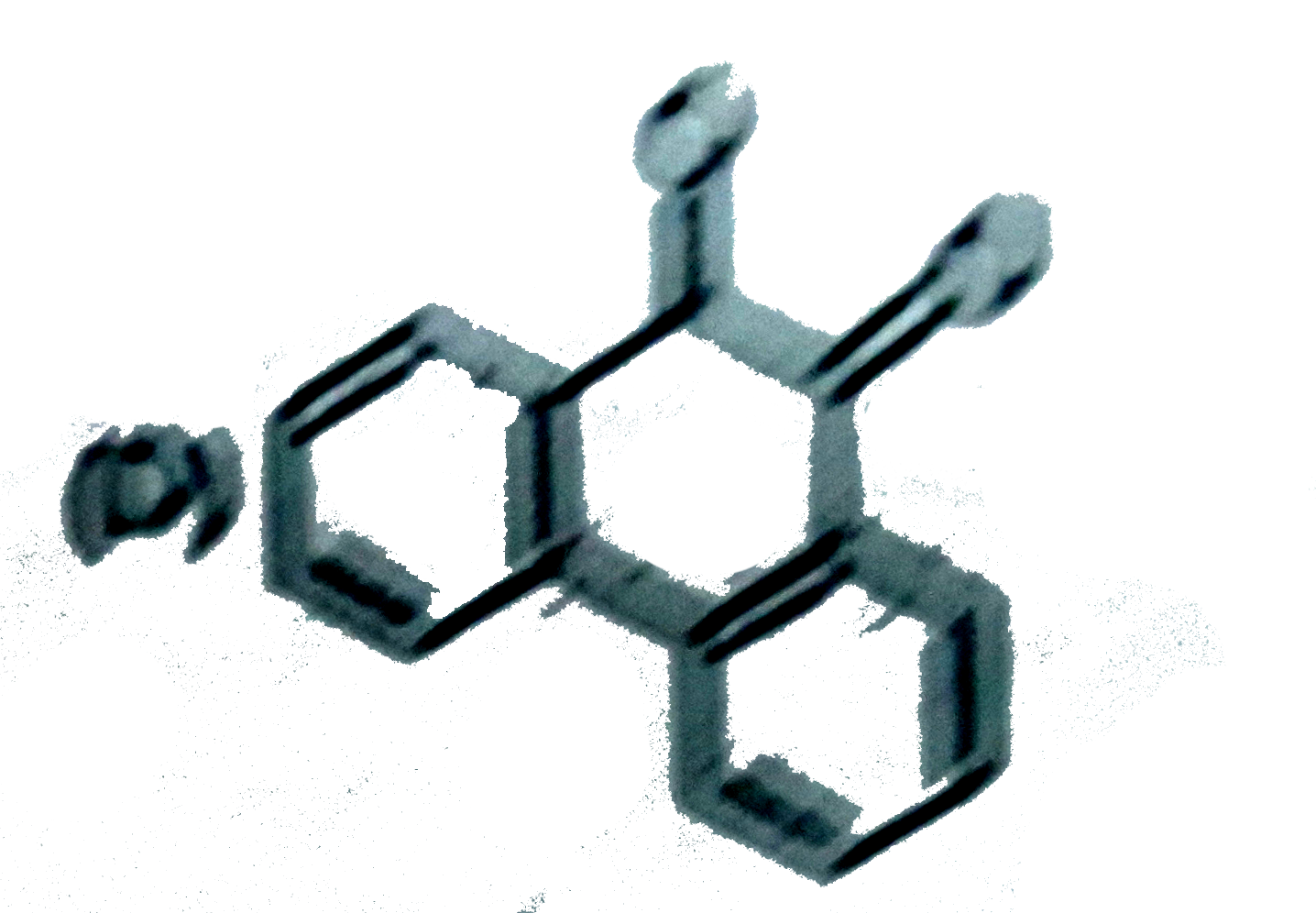Explore topic-wise InterviewSolutions in .
This section includes InterviewSolutions, each offering curated multiple-choice questions to sharpen your knowledge and support exam preparation. Choose a topic below to get started.
| 18301. |
Which of the following is na example of non-biodegradable detergent? |
|
Answer»
|
|
| 18302. |
Write one difference between chain growth and step growth polymerisation. Give one example of each. |
|
Answer» Solution :Chain growth polymerisation involves addition of monomers by free-radical or ionic mechanism. Unsaturated monomers react by this mode of polymerisation to give polymers. Examples : Polythene, POLYPROPYLENE. STEP growth polymerisation involves monomers having MULTI functional GROUPS and the polymer is obtained in gradual steps by condensation between the monomers with the removal of simple molecules like HCI or `H_(2)O`, Nylon 6, 6 is formed by step growth polymerisation. |
|
| 18303. |
What is the oxidation state of chlorine in hypochlorous acid? |
| Answer» ANSWER :D | |
| 18304. |
The spin only magnetic moment [Mn(Br)_4]^(2+)is 5.9BM. Then possible hybridisation of Mn in the complex is |
|
Answer» `sp^3d` |
|
| 18305. |
Unit of equivalent conductance is: |
|
Answer» `ohm^-1cm^-1` |
|
| 18306. |
What is Osmotic pressure ? |
| Answer» Solution :The excess PRESSURE which must be exerted from the solution SIDE in ORDER to checkthe flow of solvent molecules TOWARDS the solution side, when both are SEPARATED by a semipermeable membrance is called osmotic pressure. | |
| 18307. |
Transition metals and their compounds show catalytic properties because |
|
Answer» They have COMPARATIVELY small size |
|
| 18309. |
When acyl chlorideis heated with Na Salt of a carboxylic acid the product is |
|
Answer» an aldehyde |
|
| 18310. |
Which of the following ions will exhibit colour in aqueous solutions ? |
|
Answer» `LU^(3+)` (Z= 71) |
|
| 18311. |
What is the difference between elastomers and fibres ? Give one example of each. |
|
Answer» Solution : ELASTOMERS : POLYMERS in which the intermolecular forces of attraction between the polymer chains are weakest are called elastomers. E.g., NATURAL rubber. FIBRES : Polymers in which intermolecular forces of attraction are the STRONGEST are called fibres. E.g., Nylon-6, 6. |
|
| 18314. |
Which of the following equations is not correctly formulated? |
|
Answer» `3Cu + 8HNO_3 (DIL) RARR 3Cu(NO_3)_2 + 2NO + 4H_2O` |
|
| 18315. |
Which of the following is true Freundlich adsorption isotherm equation? |
|
Answer» Purely empirical |
|
| 18316. |
Which does not influence the rate of a reaction ? |
|
Answer» Temperature |
|
| 18317. |
Which of the following option is correct of the above reaction? |
|
Answer» `x=PhCOOH y=C_(2)H_(5)OH` |
|
| 18318. |
Which cannot exist on the basis of MO theory ? |
|
Answer» `C_2` |
|
| 18319. |
Which of the following carboxylic acid undergoes decarboxylation easily: |
|
Answer» `C_6H_5-CO-CH_2COOH` |
|
| 18320. |
Which of the following colloids cannot be coagulated easily? |
|
Answer» LYOPHOBIC COLLOIDS |
|
| 18321. |
Whichofthefollowingores is bestconcentratedby foth floatationmethod ? |
|
Answer» Magnetite |
|
| 18322. |
Which of the following is the correct order of bond angle in H_2S, NH_3, BF_3 and SiH_4? |
|
Answer» `H_2Slt NH_3lt BF_3lt SiH_4` |
|
| 18323. |
Which of the following statements about DDT is incorrect? |
|
Answer» Many SPECIES of INSECTS developed resistance to DDT. |
|
| 18324. |
Describe the shape of XeF_6 molecules. |
|
Answer» OCTAHEDRAL |
|
| 18325. |
Which of the following statements concerning transition elements is not true? |
|
Answer» They are all metals |
|
| 18326. |
Why acid anhydride are preferred to acyl chloride for carrying out acylation reactions ? |
| Answer» Solution :ACID ANHYDRIDE are preferred to ACYL CHLORIDE for carrying out acylation reactions . Because (i) Easily available (ii) Cheap . (iii) EASY to prepare (iv) Easily undergo acylation without irritating odours | |
| 18327. |
Which substance is used as a substitue for natural rubber ? |
| Answer» Solution :Butyl rubber | |
| 18328. |
What is meant by RNA and DNA ? |
| Answer» SOLUTION :RNA stands for RIBONUCLEIC ACID and DNA stands for DEOXYRIBONUCLEIC acid. | |
| 18329. |
Which is the correct statement about birth control pills ? |
|
Answer» Contain ESTROGEN only. |
|
| 18330. |
What is the bond angle in H_2O ? |
| Answer» SOLUTION :`92.5^@` | |
| 18331. |
Under Wolf-Kishner redustion conditions, the conversions which may be brought about are |
|
Answer» BENZOPHENONE into diphenyl alcohol |
|
| 18332. |
Which would be the most stable conformation of trans-1-ethyl-3-methylcyclohexane ? |
|
Answer» equatorial (METHYL) -equatorial (ETHYL) |
|
| 18333. |
Which method is most suitable to determine molecular mass of polymer ? |
|
Answer» SOLUTION :Measurement of osmotic pressure provides another METHOD of determining molar masses of solutes. This method is widely used to determine molar masses of proteins, polymers and other macro molecules. The osmotic pressure method has the ADVANTAGE over other methods as pressure measurement is around the room temperature and the molarity of the solution is used instead of molality. As compared to other colligative properties, its magnitude is large even for very dilute SOLUTIONS. The technique of osmotic pressure for determination of molar mass of solutes is particularly USEFUL for bio molecules as they are generally not stable at higher temperatures and polymers have poor solubility. |
|
| 18334. |
The volume of0.0168 mol of O_(2) obtained by decomposition of KClO_(3) and collected by dispfacement of water is 428 mL at a pressure of754 mm Hg at 25 °C. The pressure of water vapour at 25 °C is |
|
Answer» 18 MM Hg `=0.0168xx22400=376.3` ML. `(P_(1)V_(1))/(T_(1))=(P_(2)V_(2))/(T_(2))` or `(760xx376.3)/273=(P_(2)xx428)/298` or `P_(2)=730mm` Pressure of water= 754 - 730=24 mm |
|
| 18335. |
Which of the following solutions has highest bolling point? |
|
Answer» 0.1 m GLUCOSE in water |
|
| 18336. |
wulfenite ( a yellow - red mineral ) having waxy lusture occurs in lead ores , is an important source of : |
|
Answer» |
|
| 18337. |
Which is formed by the reduction of RCN with sodium and alcohol? |
|
Answer» `RCONH_2` |
|
| 18338. |
What are the uses of nitrobenzene? |
|
Answer» SOLUTION :(i) NITRO benzene is used to produce lubricating oils in MOTORS and machinery. (ii) It is used in the manufacture of dyes, drugs, pesiticides, synthelic RUBBER, aniline and explosives like TNT, TNB. |
|
| 18339. |
Which of the following are isoelectronic and iso structural ?NO_(3)^(-), CO_(3)^(2-), ClO_(3)^(-), SO_(3) |
|
Answer» 1. `NO_(3)^(-),CO_(3)^(2-)` |
|
| 18340. |
which one of the following is the reagent used to identify glucose? |
|
Answer» NEUTRAL FERRIC chloride |
|
| 18341. |
The standardheat of formation in kcal/mol of NO_(2(g)) and N_2O_(4(g)) are 8.0 and 2.0 respectively . The heat of dimerisation of NO_2 is |
|
Answer» A) `-14.0` KCAL |
|
| 18342. |
Which of the following is a Biopolymer ? |
|
Answer» POLYSACCHARIDE |
|
| 18343. |
Which of the following ligands causes maximum crystal field splitting ? |
|
Answer» `SCN^(-)` `+1+x+0=0, therefore x=-1` |
|
| 18344. |
Total number of stereoisomers possible for the given molecule will be |
Answer» 
|
|
| 18345. |
Which of the statements are correct? |
|
Answer» `-NH_(2)` is ortho-para directing group |
|
| 18346. |
The relative ease of dehydration ofa lcohols follows the following order: |
|
Answer» tertiarygtsecondarygtprimary |
|
| 18347. |
When 200 gm of an Oleum sample labeled as 109% is mixed with 300 gm of another Oleum sample labeled as 118%, the new labeling of resulting Oleum sample becomes - |
|
Answer» `112.6%` 100 gm oleum `rArr SO_(3) = (320)/(5) = 64 gm` `SO_(3) + H_(2)O rarr H_(2)SO_(4)` Moles `(64)/(80) "" (64)/(80)` Mass of `H_(2)O = (64)/(80) xx 18 = 14.4 gm` LABELLING `= (100 + 14.4)%` `114.4 %` |
|
| 18348. |
What is electrode and half-cell ? Explain symbolic representationby suitable example. |
|
Answer» Solution :Electrode: In galvanic cell or electrolytic cell, the system generated by putting metal rod or plate in its salt SOLUTIONIS known as electrode, in which flow of current/electrode occur. Half-cell: Electrode and solution in which it is kept, where oxidation or reduction reaction is possible such system is CALLED half-cell. Symbolic representation of electrode (Half-cell): When vertical line is put between metal and its ion and according to the convention for reduction reaction metal ion/metal is to be written. For reduction: Symbolic representation of `Zn^(2+)+2E^(-) to Zn` is `Zn_((aq))^(2+)|Zn_((S))` For oxidation: Symbolic representation of `Zn_((S))toZn^(2+)+2e^-)` is `Zn_((S))|Zn_((aq))^(2+)` If reactant or product is gar or liquid then usually platinum metal is used. symbolic representation of such electrode is as follows: (i) For hydrogen electrode : Anode : `Pt_((S))|H_(2(g))(1" bar")|H_((aq))^(+)` . . . (Oxidation) CATHODE: `H_((aq))^(+)|H_(2(g))(1" bar")Pt`. . . (Reduction) (ii) For bromine electrode: Cathode: `Pt_((S))|Br_(2(aq))|Br_((aq))^(-)`. . . (Reduction) Reaction : `(1)/(2)Br_(2(aq))+E^(-)toBr^(-)`. . . (Reduction) Anode: `Br_((aq))^(-)|Br_(2(aq))|Pt_((S))`. . . (Reduction) Reaction: `Br_((aq))^(-)to(1)/(2)Br_(2(aq))+e^(-)`. . .(Reduction) |
|
| 18349. |
What is the value of decay constant of a compound having half-life time T_(1//2) = 2.95 days |
|
Answer» `2.7 xx 10^(-5) s^(-1)` `= 2.95 xx 24 xx 60 xx 60X = 254880` `lamda = (0.693)/(t_(1//2)) = (0.693)/(254880) = 2.7 xx 10^(-6) s^(-1)` |
|
| 18350. |
The specific heat of a metal of atomic mass 32 is likely has a vapour density 59.25. the valency of the element will be: |
|
Answer» 0.25 |
|






